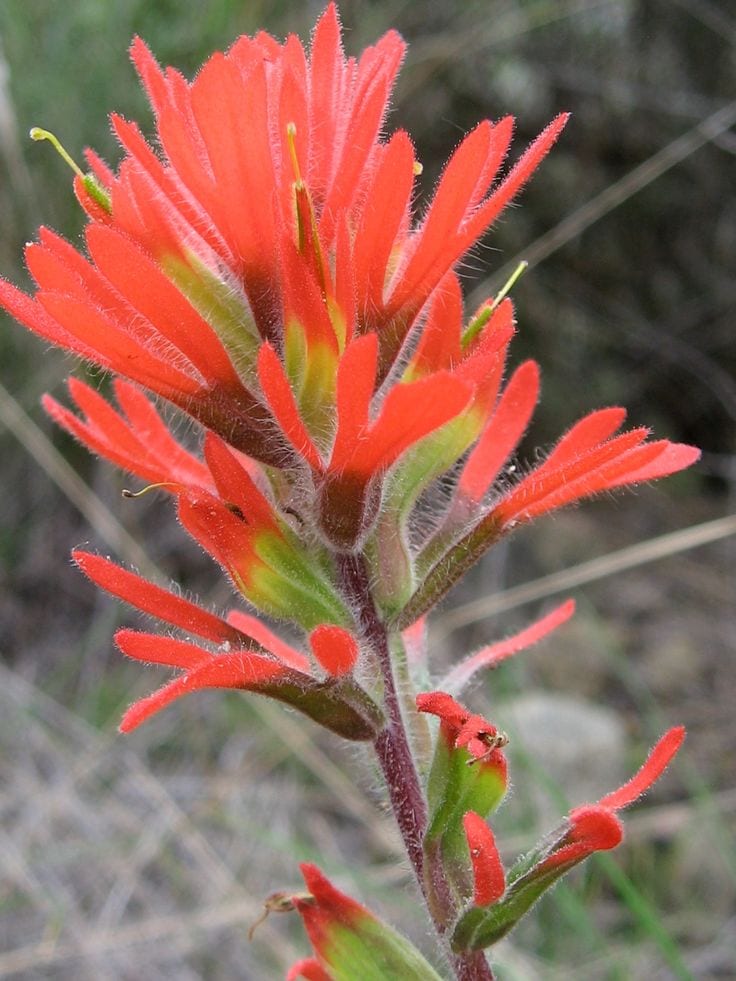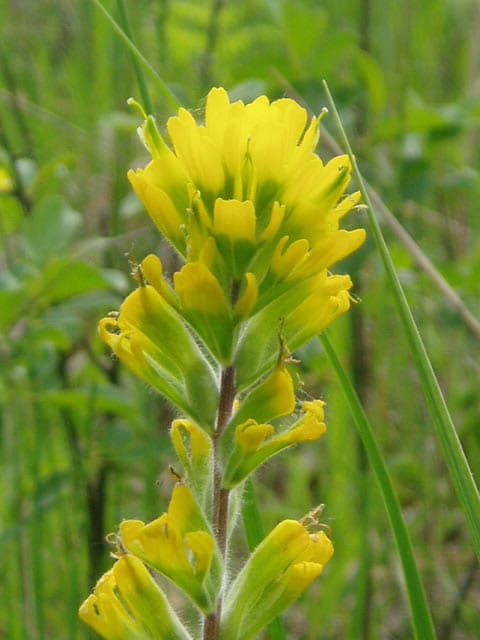The Indian Paintbrush is in the Castilleja genus. There are 200 species of annual and perennial plants in this genus. The flowers of the Indian Paintbrush were consumed by some Native American Tribes along with other greens. If they are grown in high alkaline soils, the plants can absorb high levels of selenium and can therefore become toxic, so please do not experiment. Indian paintbrush was also used as a hair wash and for relieving rheumatism. The Native Americans also soaked the plant in grease to make hair oil.

Paintbrushes come in many colors. You may see them in orange, yellow, white, pink, purple, and the most common color, red. They are hemiparasitic, which means that they may use a host plant to survive. Through their roots, they obtain nourishment from a host plant such as sagebrush or even grasses.

Indian Paintbrush can also be called Prairie Fire, Grandmother’s Hair, Butterfly weed, Painted Lady, and Painted Cup.
The types of Indian Paintbrush flowers seen at the dam site are: Castilleja coccinea, Castilleja cusickii, and Castilleja chromosa. These are all perennials. There is one annual paintbrush, Castilleja minor, that has also been seen.

